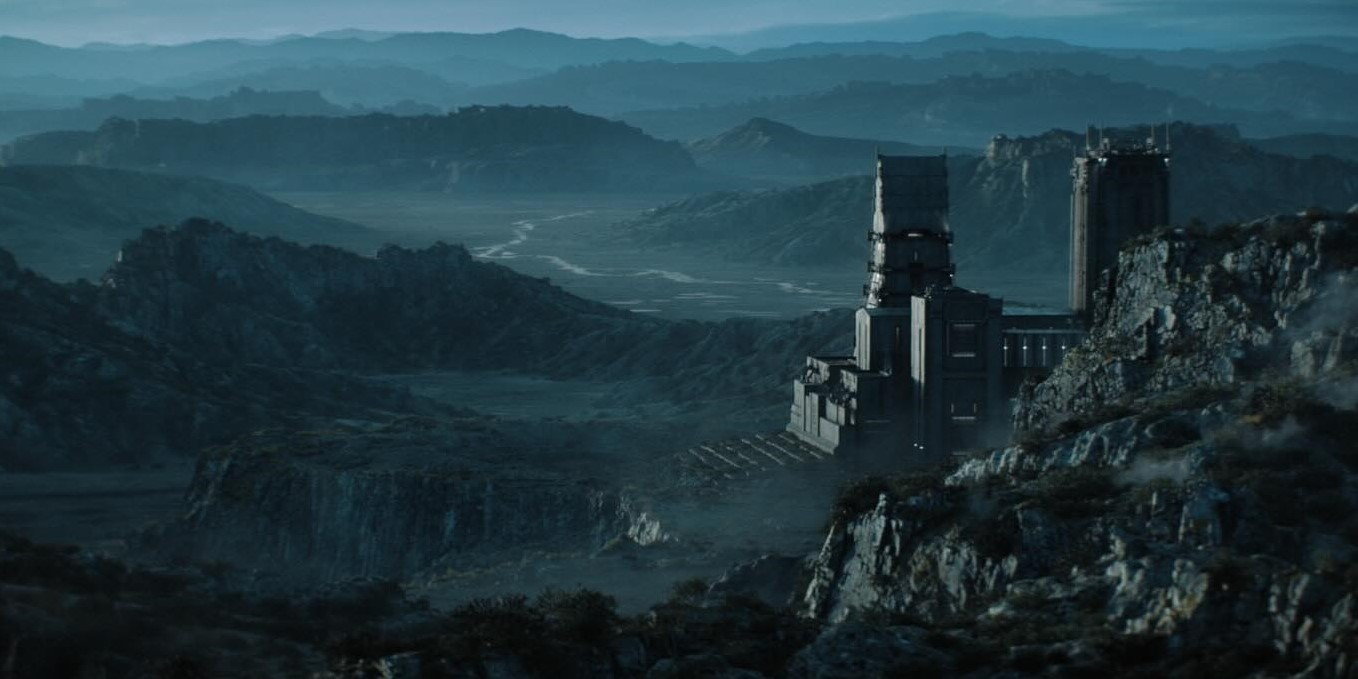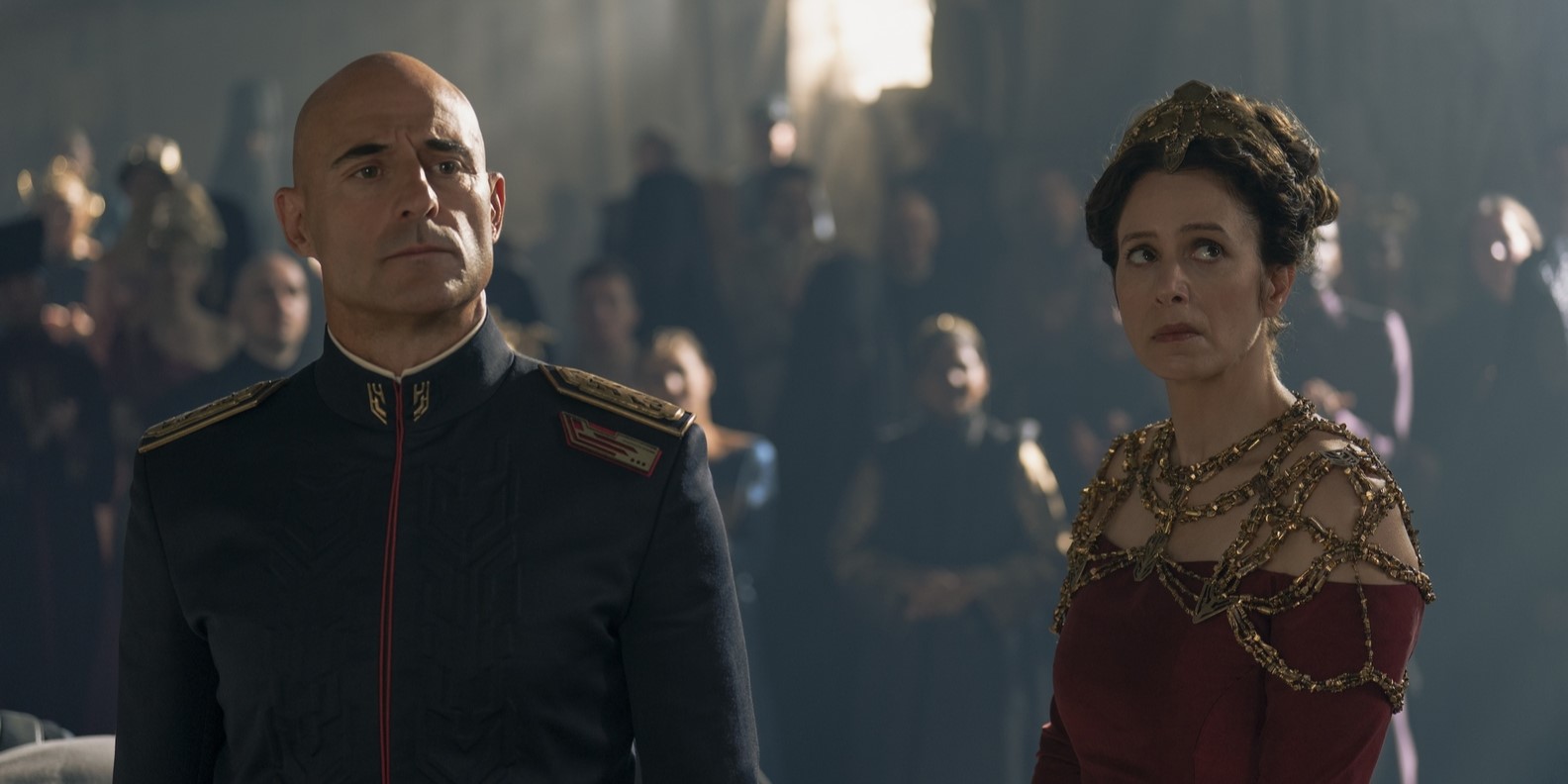Developed by Diane Ademu-John and Alison Schapker, ‘Dune: Prophecy’ takes place 10,000 years before Denis Villeneuve’s ‘Dune’ movie series and is set in Frank Herbert’s ‘Dune’ universe. The show centers on Valya (Emily Watson) and Tula (Olivia Williams), sisters from the Harkonnen family, in the early days of their house’s establishment and their rivalry with House Atreides. Around 150 years have passed since the devastation of the Great Machine Wars, and humanity is rebuilding with alternative methods and technologies after banning all forms of advanced artificial intelligence. Valya and Tula become pivotal players in shaping the future of the species, holding dominion over worlds and leverage in the court of Emperor Javicco Corrino. The sci-fi HBO series features settings of epic proportions, from the sisterhood’s craggy world to the emperor’s vast gilded palace and the primordial deserts of Arrakis.
Dune: Prophecy Filming Locations

Filming for ‘Dune: Prophecy’ is carried out in a studio located in Budapest, Hungary. Initially slated to roll cameras on November 2, 2020, the show underwent several delays before filming began, starting with the COVID-19 pandemic lockdown. In 2022, the series was set to begin shooting on September 5 in Ireland, but further changes seemed to take place. There were plans to conduct filming in the deserts of Jordan, but they did not come to fruition, at least not for the debut season. Principal photography finally began on November 22, 2022, under the tentative title ‘Dune: The Sisterhood,’ and wrapped up for the first season by December 18, 2023. The production was relatively unaffected by the 2023 SAG-AFTRA strike since its cast and crew members fell under Equity, a UK-based union.
Budapest, Hungary
‘Dune: Prophecy’ is primarily filmed at the Origo Studios in Budapest, Hungary. Located at Felsőkert u. 9 on the city’s northeastern periphery, Origo Studios also served as the filming location for Villeneuve’s ‘Dune: Part One’ and ‘Dune: Part Two.’ The sets created for the films were preserved by the studio and became invaluable to the team behind ‘Dune: Prophecy.’ Cinematographer Pierre Gill had anticipated that the production team would need to use extensive volume technology to simulate the backgrounds for the series. However, with the ‘Dune’ film sets intact and the crew creating new ones, most of the interior sequences of the show for the first season are shot using intricately crafted physical sets. While the show does not use volume technology, there is, of course, plenty of VFX required to create the landscape shots and sci-fi scenes.
The creatives seek to adhere to the visual aesthetic created by Villeneuve’s films while also differentiating it enough to make the show’s setting appear as its past version. This became simpler as the series is not set in Arrakis and explores new planets and alien landscapes. The production team serendipitously faced the harsh Hungarian winter during the show’s debut season while shooting sequences set on the ice planet Lankiveil. With grey skies and real snowfall overhead, reality and artistry came together to elevate the team’s immersion in their work.
In an interview, Gill marveled at the scale of the show and the extent of the production design. “I love any big project, first of all, because on this type of project, like ‘Dune,’ you’re gonna work with the amazing, beautiful production design and you’re gonna work with these amazing costumes and wigs,” he said. “And then there’s gonna be VFX, and there’s gonna be rigs and stuff like that. So, it’s a candy store.” He laid further emphasis on how huge the sets were since they did not require the use of any volume walls to bring the epic scale of the setting to life for the indoor sequences.

This was possible, in part due to the comprehensive support provided by Origo Studios. Its facilities include 11 soundstages, several backlots spread out over 10 acres, a water tank, and a green box stage. Origo Studios contributes to Budapest’s growing image as a haven of filmmaking for modern cinema. Budapest itself is a treasure trove of shooting locations with its historic architecture, ability to stand in for other European cities, and film-friendly policies. Hungary also offers generous tax incentives for film and TV productions, making Budapest a financially attractive choice for big-budget projects. These incentives, combined with the city’s infrastructure and talent pool, make it one of Europe’s most sought-after filming locations that has attracted notable productions, including ‘Alien: Romulus,’ ‘Borderlands,’ Netflix’s ‘The Witcher,’ and ‘Midsommar.’


You must be logged in to post a comment.